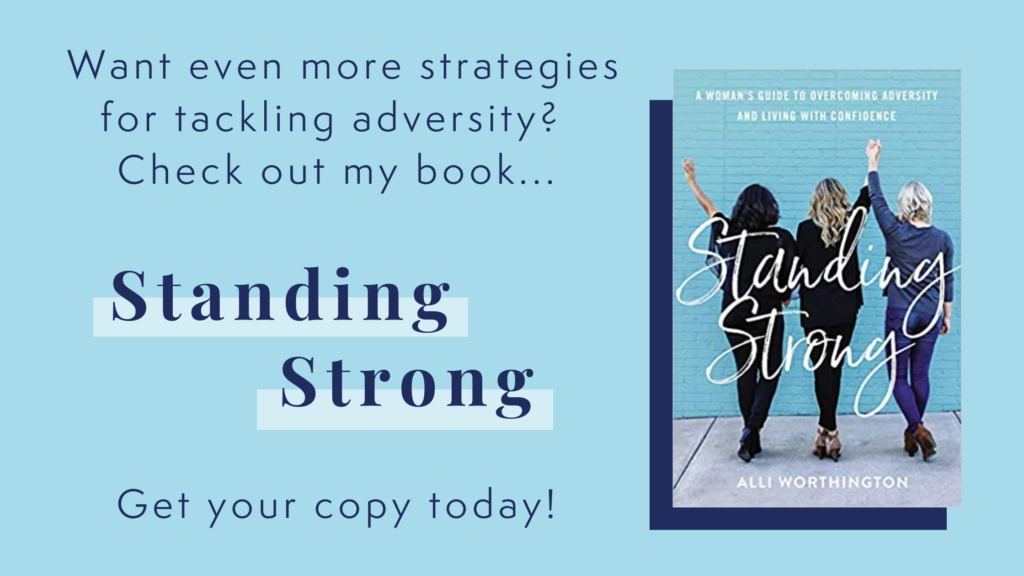10 Inspiring Tips to Overcome Adversity
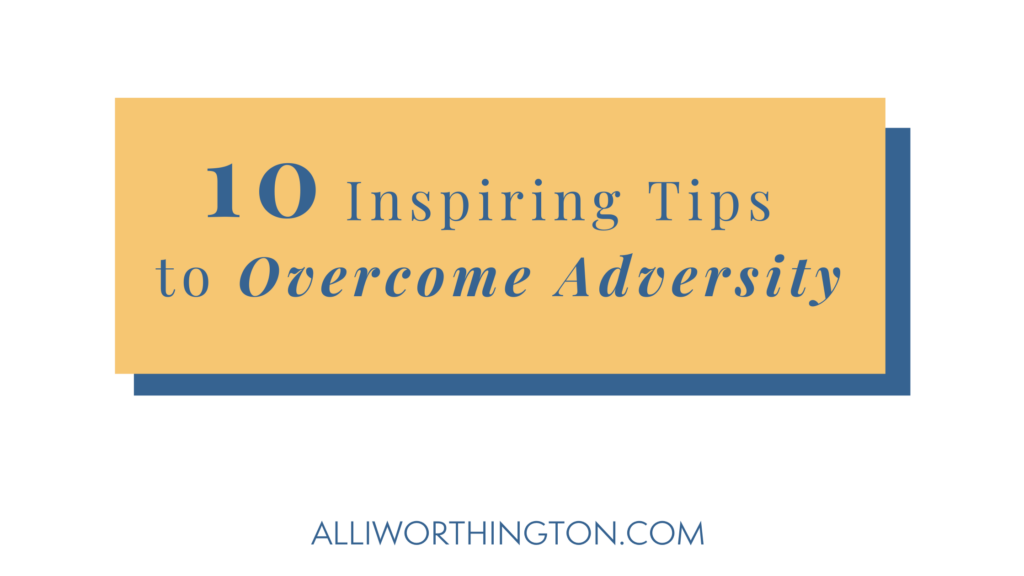
If there’s one thing that can be guaranteed in life, it’s that we will all face adversity. Adversity is the great equalizer. And adversity is HARD.
But do you know what’s powerful? Resilience.
Resilience is our ability to respond to hardship by drawing on personal resources like psychological capital, hope, optimism, or a growth mindset. Note: These skills are cultivated throughout life—starting with how we were taught to respond to adversity in childhood. We are always able to further develop resiliency.
Resilience is like a muscle; our ability to overcome hardship and bounce back from adversity will grow stronger and activate faster the more we practice. Adversity is what we make of it. Many people point to seasons of adversity as training grounds that helped them get to the resilient place they’re at today.
In this article, we’ll explore types of adversity and a few ways to navigate hardship effectively.
Types of Adversity
There are six broad categories of adversity, and an infinite number of examples will fall into each. As you read this brief overview, think about what you’re facing right now and what category into which it might fall.
Physical Adversity
Physical adversity is rooted in some form of limitation of physical abilities. Such adversity may result from an injury or adverse event at a single moment in life, or a person may be born with physical limitations and not know any other way of living. Physical adversity might be chronic or short-term.
Financial Adversity
Financial adversity refers to any difficulty related to money, such as a struggle to pay for necessities (e.g., food or rent). This need can be persistent—such as living in poverty—or temporary—like a medical crisis or short period of unemployment.
Mental Adversity
Mental adversity encompasses struggles with our internal dialogue, such as mental health concerns or low self-esteem. Depression, anxiety, and chronic stress are the most common forms of mental adversity.
Emotional Adversity
Emotional adversity is closely related to mental adversity but has a stronger connection to the emotions we are trying to overcome, such as frustration with a seemingly impossible situation.
Social Adversity
Social adversity describes any difficulty we might feel in navigating social situations, such as social anxiety, shyness, or low self-confidence in our social skills. It can also manifest as troubling relationships with others, such as bullying, abuse, or toxic workplace behaviors.
Spiritual Adversity
Spiritual adversity arises when we lose belief in what we think is true. This could be a change in our fundamental belief system (e.g., faith deconstruction) or an evolving perception of how we perceive the world to work.
Adversity is subjective. What might not phase some people will be a source of strife for others. It’s important to have compassion for both ourselves and others when facing a hard time.
Adversity can come from situations involving other people or it may impact us alone. We might be able to attribute a single cause to our hardship, or it might be the result of years of little things that built up to feel generally overwhelming in the present. No matter the source, it is possible to overcome hardship. Let’s explore.
How to Overcome Adversity
Specific strategies for navigating each of the six types of adversity will vary slightly. However, there are also some best practices for overcoming hardship, and I want you to feel empowered in this season! Here are my top 10 tips for overcoming adversity.
1. Remember this Season is Temporary
All problems have an expiration date. We may not be able to predict when this season will be over, but adversity is not meant to last forever. When we welcome temporary difficulties as a part of life, they become more manageable.
The adage, “This, too, shall pass,” can be particularly encouraging when we’re facing adversity. Life is a wild roller coaster of highs and lows, smooth sailing and hardship. Just like all the other past seasons have ended, so, too, will this one.
One key to overcoming adversity is pulling from the resources that have helped us in the past or that are stable in this present season. Maybe your family can provide the stability you need to get through a loss of employment. Or maybe your friends will commit to regular FaceTime calls to help you navigate moving to a new city.
We are more than our current hardship. We are whole people. Let’s try not to let this season define our identity or worth.
Let’s Practice.
Take time to document some of the past adversity you’ve navigated, and make a note of how each season ended. Use these notes as remembrances of God’s faithfulness and/or your resilience the next time you face hardship.
In a few months or years, this current hard season will end, and you’ll be able to pull from the strength you gained as a result of navigating this difficult situation when you face a new one. Make notes about your navigation of this season as well!
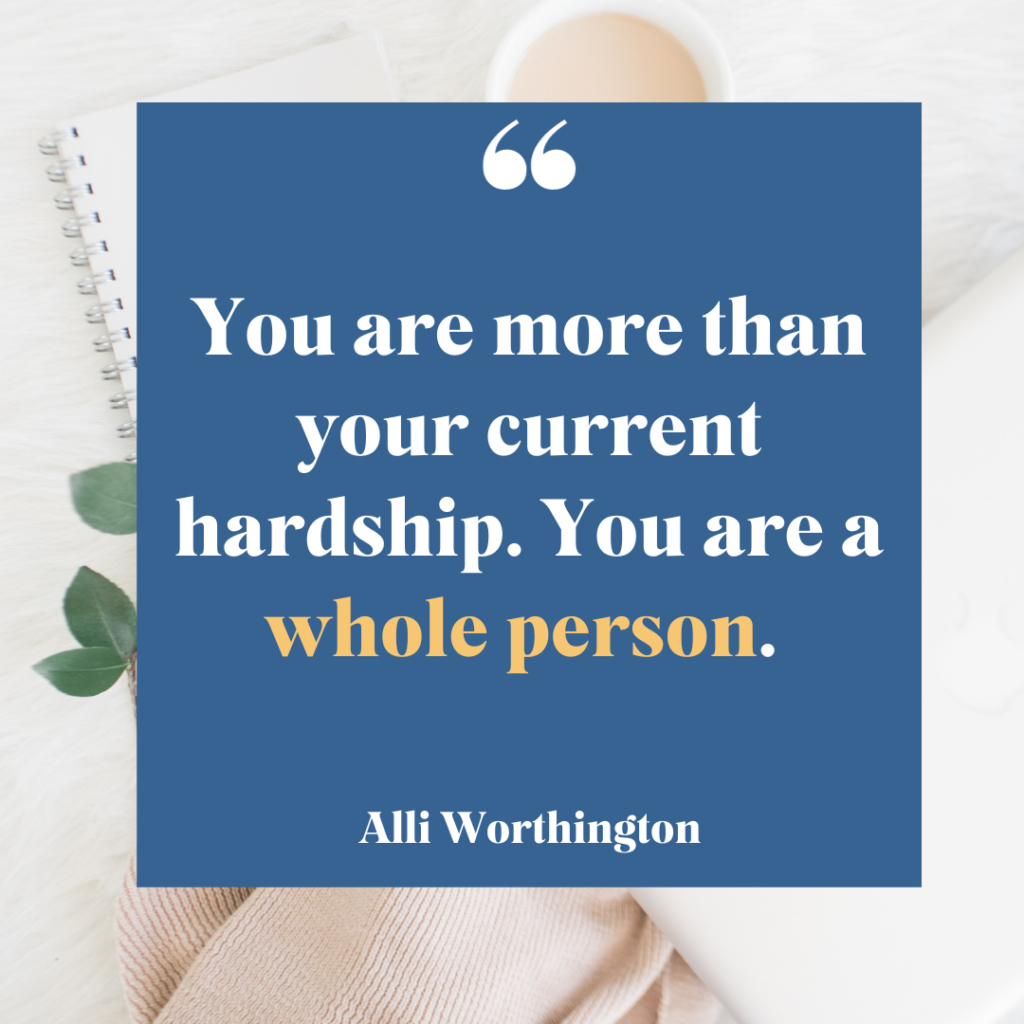
2. Allow Yourself Room to Grieve
Before moving on, we need to admit that adversity is HARD. Whenever we go through hard seasons, we need to grieve loss and change. When and how we come to the other side of this hardship, life will not look the same, and we will not be the same people.
We will be different as a result of adversity. That can be a scary thought. But we can also find hope and comfort when we take ownership of how we navigate the situation.
There are seven stages of grief (an expansion of the classic Kubler-Ross model):
- Shock & denial
- Pain & guilt
- Anger & bargaining
- Depression
- The upward turn
- Reconstruction & working through
- Acceptance & hope
Depending on the intensity and origin of this adversity, our coping skills, and the supportive factors available to us, the time we spend in each stage of the grief process will vary. Know that grief will come to an end, too. Remember, this season is temporary, and grief helps us navigate through change.
Let’s Practice.
Give yourself permission to feel all the feelings. Acknowledge that adversity is hard and messy and an unfortunate part of life. Validate your own experiences and emotions. Emotions tell us that we’re human and can be great teachers. Take all the time you need for this process.
And then, slowly begin to look up and around at your environment. Ask yourself, “Who do I want to be on the other side of this situation?” More compassionate? More forgiving? Resilient? It’s okay if you don’t have an answer to this right now. When you do, you’ll be able to embrace those traits as you move towards accepting adversity as a part of life.
Invite others into your messy season, and allow them to be agents of healing and hope. And if this all feels too big on your own, consider connecting with a professional counselor who can help you process the grief and move forward.
3. Accept Responsibility for Your Role
When adversity or misfortune strikes, we instinctively respond by looking for someone to blame. It’s human nature.
People with an internal locus of control will automatically blame themselves for the mess they’re in. It might sound like, “If only I worked harder, then they wouldn’t have laid me off,” or “There must be something wrong with me; I’m the common denominator in all these failed friendships.”
People with an external locus of control, however, will blame everyone else possible before admitting their own role in the situation. It might sound like, “My boss is an idiot,” or “No one on my team can do their job, and that’s why I missed out on an opportunity.”
The adage, “It takes two people to make or break a relationship,” helps us understand the complexity of hardship. Although it’s possible that circumstances entirely out of our control can be responsible for negative consequences in our lives, it’s ultimately up to us to take responsibility for our part of the situation. 10%, 90% … we played a certain role in getting to this point.
Let’s Practice.
Sit down and get honest with yourself about the situation you’re facing. Really think about your role and the role of others.
Then, think about what you want life to look like on the other side. Taking responsibility for the outcome you want in your life after a negative event is the first step to claiming victory.
Sometimes, we want to play the victim and feel sorry for ourselves. And sometimes, that’s an important part of the healing process. But we can’t stop there. Friend, you are capable of rising to the challenge and owning your part in creating the situation. Only then can you move on to the next step of overcoming adversity.
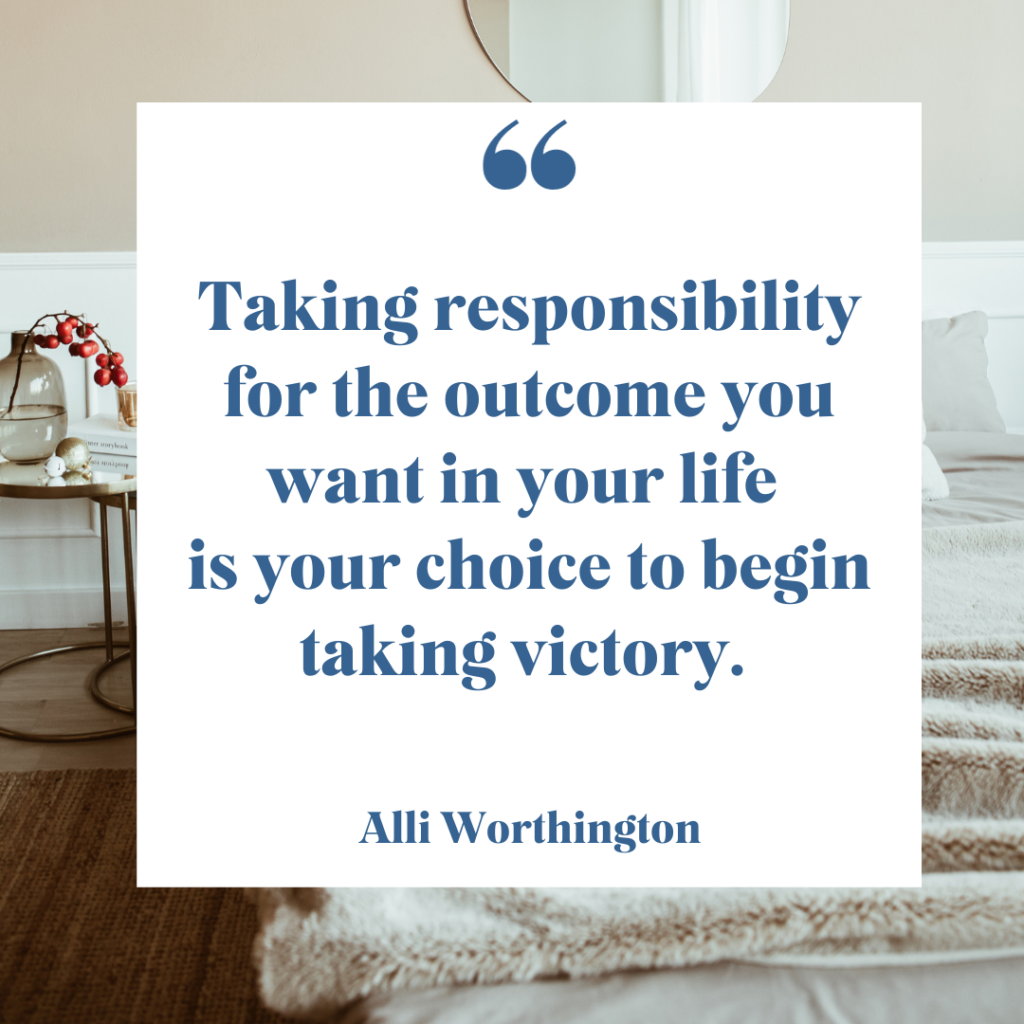
4. Reframe Your Situation
Reframing our experiences is a powerful practice that can catalyze healing and forward progress. However, we have to be careful about reframing, as there’s a fine line between helpful reframing and invalidation of our experiences.
Reframing is not the same as spiritual bypassing or toxic positivity. Spiritual bypassing is when we force ourselves to feel something we’re not, such as being happy that we’re in a hard season. Toxic positivity skips over all the hard and messy feelings we’re processing in adversity to say dismissive things like, “Everything will work out!” or, “Focus on the good!”
I’m proposing an alternative. Communicated Narrative Sense-Making (CNSM) is a theory that describes the common practice of how humans tell a story about a situation they’re experiencing. What’s neat about CNSM, though, is that we can use it strategically to retell a story in a way that is advantageous to us.
CNSM is comprised of three different types of storytelling, but the one I want to highlight is retrospective storytelling. These are the stories we remember hearing or telling that have influenced our identity, feelings or beliefs about ourselves and/or our health and well-being.
Stories are the most powerful form of human communication. They shape group culture, self-beliefs, and the trajectory of our lives. It is human nature to tell stories about the things we experience. With intentionality, we can take ownership of the narrative to use it for our benefit in overcoming adversity.
Let’s Practice.
You may have lost your job during the early days of the pandemic when a lot of layoffs were happening. At that time, you were wondering about your ability to provide for yourself, if you’d get a job again, how you’d explain the lapse of employment on your resume, and if the world would ever return to some semblance of the “normal” you once knew.
Looking back on that situation now, you can tell a different story. You learned what true self-care for mind, body, and spirit looks like; how to rest, recharge, and navigate burnout. You discovered and prioritized your core values in the midst of chaos and found ways to maintain connections with important people in your life, and that strengthened some of your closest relationships.
Take a moment to think about a situation you went through and how you can retell the story in a way that still acknowledges the hard parts—the adversity—while also celebrating the things you learned and the person you became as a result. With practice, you’ll find that you might be able to start reframing situations as they happen.
5. Don’t Judge This Situation As Good or Bad
I know, I know. It’s very tempting—and possibly comforting—to look at your situation and call it “bad.” We do it all the time! “What bad luck that all these things happened today. I was late to work, I spilled coffee all down my dress, I forgot the kids’ lunches, and now I have a project that needs to be done by the end of the week with no margin to do it. It’s an awful day.”
Here’s the thing: “good” and “bad” are moral terms, and situations hold no moral worth. This is a concept I’m borrowing from nutrition coaching: foods are not good or bad, healthy or unhealthy. Calories are calories. It’s all about how the food feels in our body.
Likewise, situations are situations. Events can be described objectively. But the way we feel and respond can be helpful or unhelpful. We tend to pull from our learned responses, and those behaviors have likely been helpful in overcoming adversity in the past.
However, these reactions may become unhelpful at a certain point, and that’s when we need to learn new ways of responding, such as reframing our perspective or inviting others to support us. Remember, an event is an event, and it has no bearing on our inherent worth.
Let’s Practice.
Pay attention to the next time you use “good” or “bad” to describe a situation. Then, take a moment to process what you’re really trying to convey with those words. Did this situation activate a trauma response? Did you feel unsettled in your gut because of a fear of conflict?
Identifying these underlying thoughts and feelings can help you remember your inherent worth and separate your identity from the hardship. Then, you can address those individual thoughts as you overcome adversity.
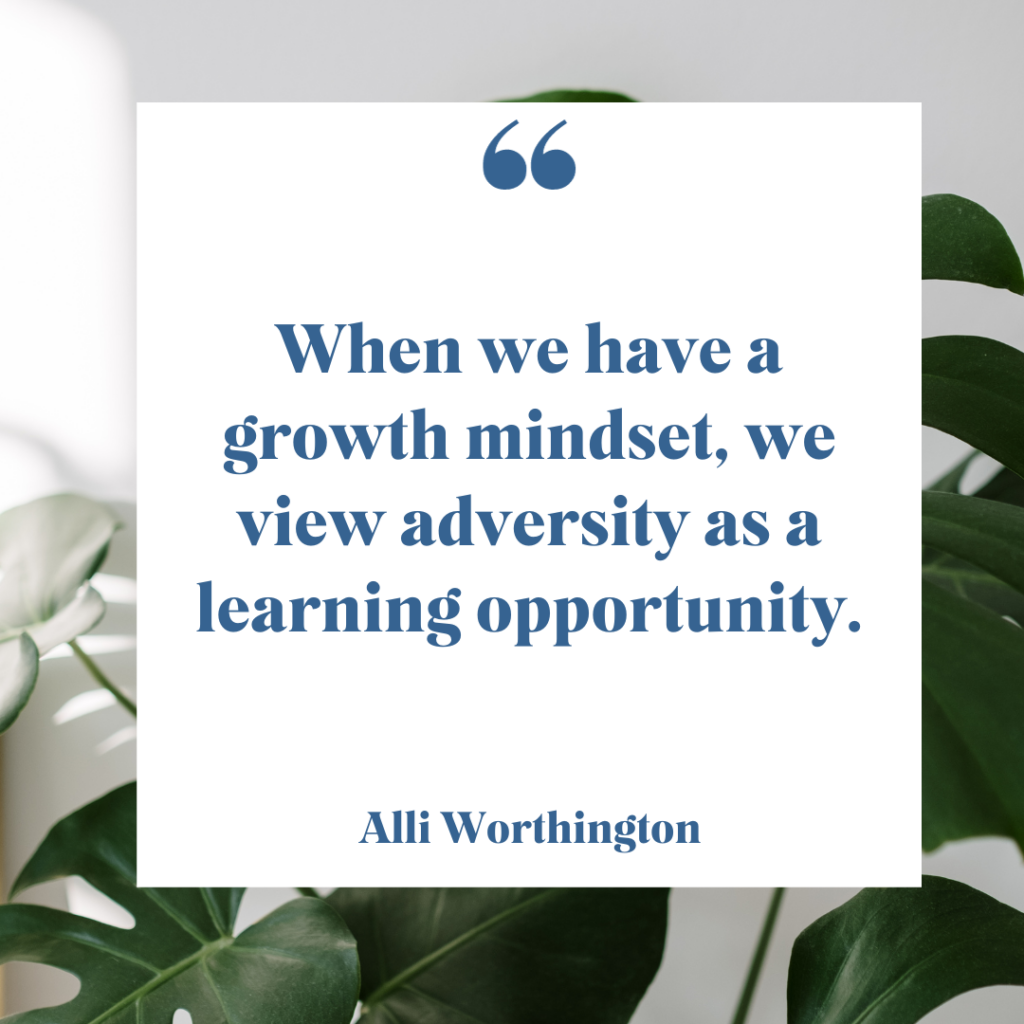
6. View Adversity as Your Greatest Teacher
If we allow it, adversity can teach us what we need to learn in order to be the best version of ourselves. To turn adversity into advantage, we have to change the way we look at difficulties or obstacles.
The concept of growth and fixed mindsets can help us shift our perspective regarding difficulty. When we have a fixed mindset, we view adversity as insurmountable—a sign that we should stop trying something lest we fail. We believe that it’s safer not to take a risk.
However, when we have a growth mindset, we view adversity as a learning opportunity. We believe that with good learning strategies, mentorship, and practice, we can overcome adversity. We won’t always succeed right away, but we are less willing to give up at the first sign of struggle.
When we approach our response to struggle with curiosity rather than judgment, we’re better able to find a helpful way forward. Be curious about what can be learned!
Let’s Practice.
Consider the expression, “Change your thinking, change your life.” You can’t change your thinking overnight, but you can take baby steps right now.
Consider any area of your life where you embody a growth mindset. How did your growth mindset come to be in that area of your life? What are some of the traits you embody? What are the benefits of this growth mindset?
Note: You might have a growth mindset in some areas of life but not others. For example, you might have a growth mindset for fitness because you grew up playing team sports and recognize the importance of struggle and practice, but you have a fixed mindset when it comes to writing because of a bad experience with a high school English teacher.
Now, look at your current hardship. How might you reframe this situation as a learning opportunity? What growth-oriented traits do you already possess that you can lean into in this season?
Finally, think about someone who has overcome a similar difficulty. What traits do they possess that helped them navigate the hardship or as a result of choosing growth? Would you be willing to reach out to them to help mentor or guide you through your own adversity? Do so!
When we encounter failures, obstacles, or challenges, we can choose to make them either a stepping stone or a tombstone.
7. Let Go of the “Shoulds”
“Should” is one of the most damaging words in the English language. “Should” communicates that we are not meeting an expectation or falling short in some way. We succumb to guilt and shame spirals when we rely too heavily on the “shoulds” communicated by ourselves or others.
And when facing adversity, it’s pretty easy to rattle off a bunch of “shoulds.” “I should be able to coordinate a nice family outing to the park like Susie does. I should be able to get this project done, no matter how much it costs me my sleep and sanity.”
Sound familiar? The “shoulds” are endless!
But so is grace. God has grace for us in our adversity, as will our closest friends and family. The trick is convincing ourselves to have grace as we do the best we can in this season of struggle.
Pay attention to the sources of the “shoulds” and try to minimize interaction with them. Social media, for example, sends many of us into shame spirals about all that we should be doing based solely upon someone else’s highlight reel. It’s humbling to recognize that our posts might cause others to feel “shoulds,” too. Let’s be gracious to ourselves and the people on the outside looking in.
Let’s Practice.
One good way to combat the “shoulds” is by developing a mantra that you can repeat to yourself whenever you feel doubt or insecurity creep in. Here are some of my favorites that you can adapt or modify to fit your self-encouragement needs:
- My best is good enough
- I have a choice here, and I’m choosing _____ (insert task or decision here)
- I’m willing to try
- I won’t quit on a bad day
- I am capable of _____ (e.g., enduring, choosing joy, doing hard things)
- I am worthy of rest
Again, put this mantra somewhere you’ll see regularly; one idea is to create a design in Canva and set it as your phone lock screen so the mantra is always with you. You want to feel empowered as you navigate adversity, and the words you speak over yourself are the most powerful tools in your adversity-navigating toolkit.
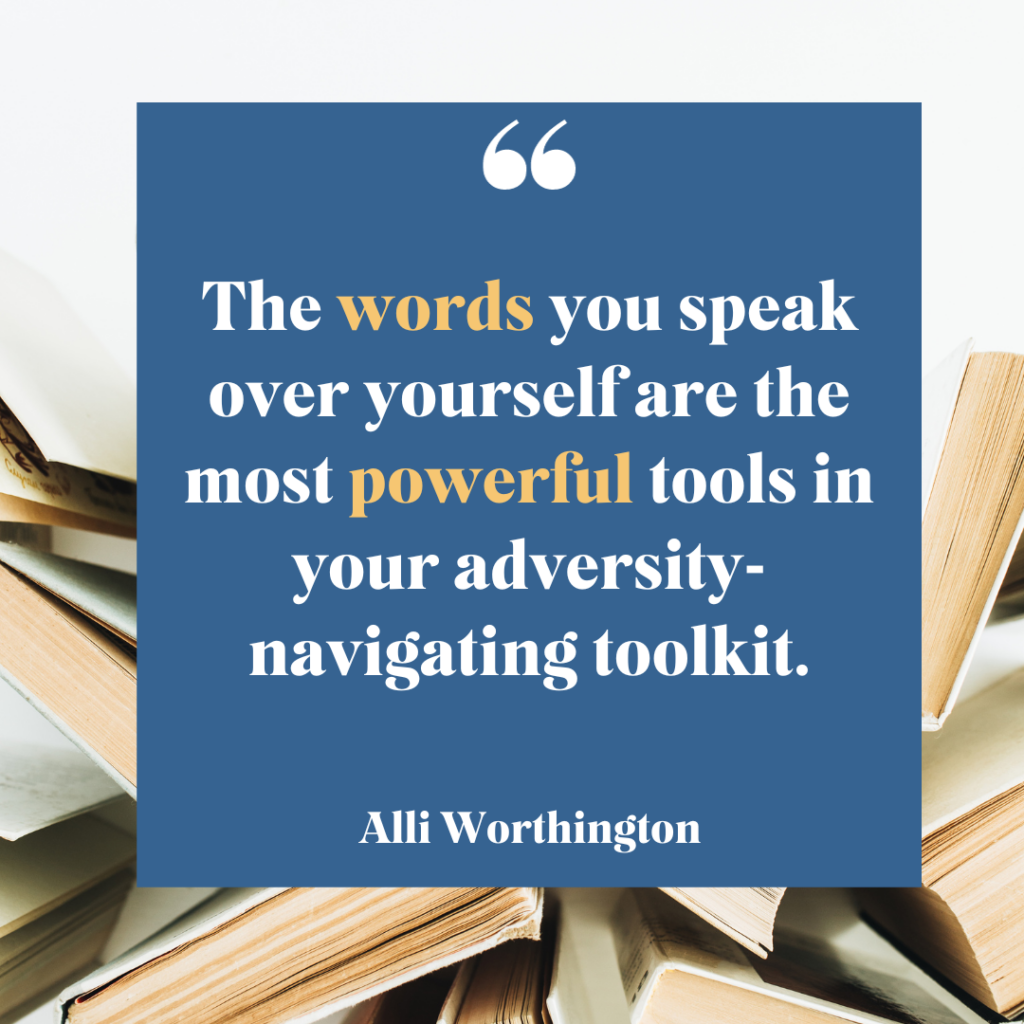
8. Care For Yourself
When we’re navigating adversity, it’s important to be gentle with ourselves. The task set before us is a difficult one! We can’t effectively overcome hardship if we’re not eating, sleeping, and caring for our hygiene.
Put your basic needs first. Then, we can start to supply some of our other needs—namely, tapping into our support system. We need to have a safe and consistent space to process adversity as we work through it. This person could be a pastor, a trusted friend, or a professional counselor. Going through it alone might be the worst thing for our healing.
Let’s Practice.
Friend, get honest with yourself. Have you been eating 3 relatively balanced meals each day? Have you been sleeping at least 7 hours a night? Are you bathing regularly and wearing clean clothes? If the answer is no, then think about systems you can shift or implement to prioritize caring for your basic needs.
Next, think about the people speaking into your life in this season. Are they speaking words of hope, grace, and life? Great—lean into them! If their words aren’t as helpful or if you can’t think of anyone, consider if there is a professional you can connect with to help you navigate this season. And then reach out.
Caring for yourself is non-negotiable.
9. Look for the Good
In Think and Grow Rich, Napoleon Hill wrote, “Every adversity, every failure, every heartache carries with it a seed of equivalent benefit.” We will find good in our situation when we intentionally seek a solution to our hardship or try to find a benefit in our obstacle.
Instead of complaining or wondering, “Why is this happening to me?” let’s start asking the question, “What can I learn or take away from this situation?” By shifting our attention to learning in this situation, we’re starting the process of overcoming adversity.
Let’s Practice.
An easy way to find the good is to practice gratitude. What are you grateful for in your life right now? Write these things down in your journal or on a piece of paper, and place that list somewhere you’ll see it regularly. The more grateful you are, the more things you will find to be grateful for.
Even more important than expressing gratitude to yourself is sharing that gratitude aloud through corporate thanksgiving. Find just one or two other people who cultivate an attitude of gratitude and connect regularly to share with one another. This practice forces you to find reasons to be grateful for things other than life milestones (e.g., a job promotion).
Regular thanksgiving empowers you to see the good in day-to-day life, like a solid night’s sleep, spring flowers, or a delicious cup of coffee during a slow morning. Gratitude won’t instantly make your hardship disappear, but it will change your attitude so that you’re not as overwhelmed as you navigate this season.
I want to mention again that looking for the good in adversity is NOT the same thing as toxic positivity, spiritual bypassing, or invalidation of our hardship. Rather, looking for the good helps us maintain a glimmer of hope in a challenging season.

10. Have Hope
Hope is vulnerable and scary. When we’re in the midst of adversity, it often feels safer to cling to the evidence of experience. We know pain and loss and hardship, and we like to believe that expecting the worst will make adversity less painful.
That’s a lie. My friend Nicole Zasowski researches and writes about choosing hope, joy, and celebration in the midst of hardship. Even though hard things happen in life, hope allows us to see the good in the present. Hope flows from the hard and brave choice to choose celebration.
Hope is POWERFUL and BRAVE. It is the belief that things will get better, even when there is no direct evidence that confirms that position. Hope may be one of the most important factors in dealing with and overcoming adversity.
I think it’s no coincidence that the grieving process ends in hope. Because we have overcome hardship, our hope is stronger and more firmly rooted in our identity. And for those of us who are spiritual, our hope is also rooted in God’s goodness and faithfulness as we walk through adversity. Hope is STRONG.
Let’s Practice.
One reason why people give up and succumb to grief and despair is that they lose hope. Regardless of your situation, you, too, can choose to have hope.
Write a list of five things that give you hope and post it somewhere you’ll look regularly.
If you’re unable to make this list on your own, ask a friend to help. I bet they’ll be willing to carry hope for you until you can hope again on your own. After all, adversity is common to the human experience, and there’s something beautiful about using this great equalizer to help heal one another.
_____
Being able to overcome adversity is an option for all of us. It takes work, dedication, and the desire to want to change.
Sure, it might seem easier to do nothing, stay the same, or continue feeling paralyzed by the things around us. But staying in our rut doesn’t help us claim victory through the hard seasons.
When we use the tools described in this article to transform our minds and our thinking patterns, we’re well on our way to turning adversity into an advantage!
I believe in you—in your ability to do the hard things. I promise you will be okay; you’ve overcome things before, and you will make it through this season, too. Joy and hope will be restored (and we can help them reemerge through practices of gratitude and celebration).
Now, friend, I want YOU to believe in YOURSELF—that you are capable of doing hard things. You have before, and you will now.
